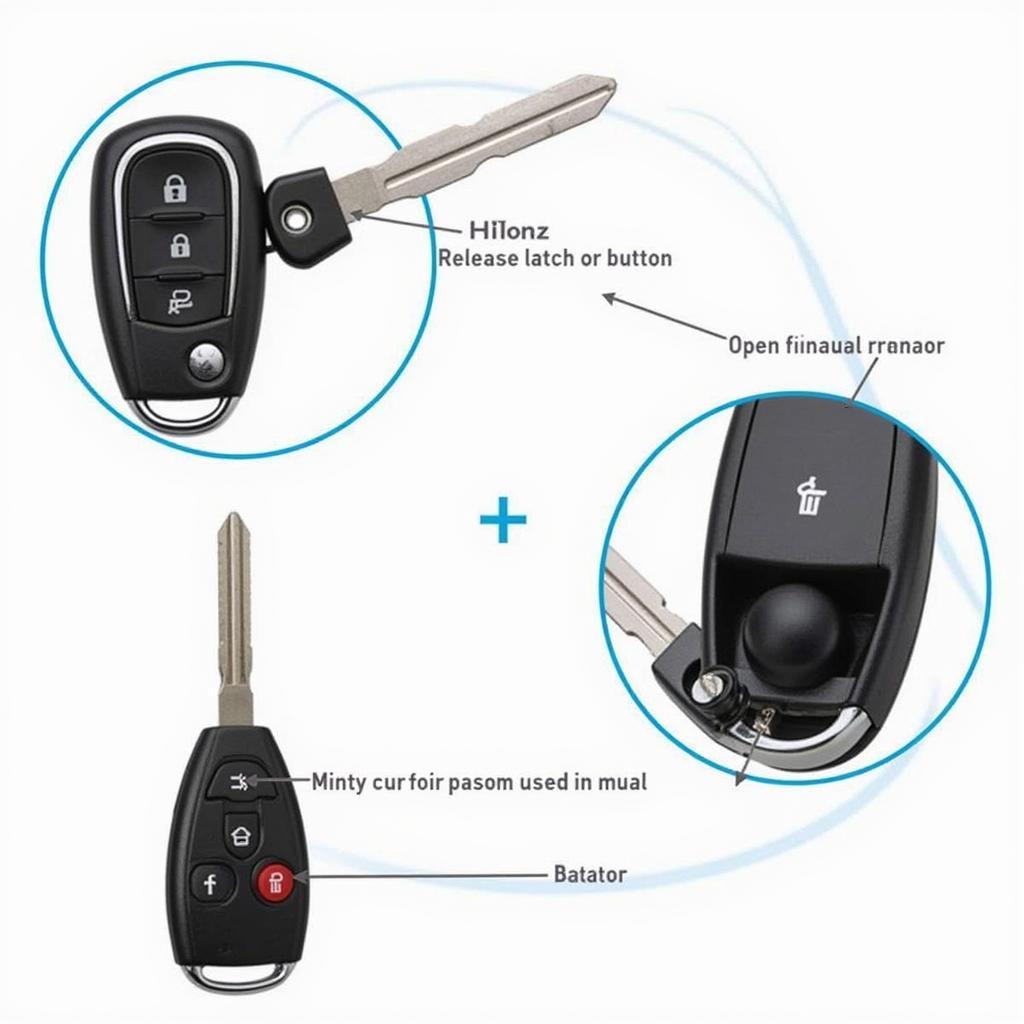Checking battery drain with a multimeter is a crucial skill for any car owner. A parasitic draw, even a small one, can leave you stranded with a dead battery. This guide will walk you through the process, from basic principles to advanced troubleshooting techniques, empowering you to diagnose and fix battery drain issues yourself.
Understanding Battery Drain
Before diving into the multimeter, let’s understand what battery drain is. A healthy car battery naturally discharges slowly, but a significant drain while the car is off indicates a problem. This “parasitic draw” can stem from various sources, like faulty wiring, malfunctioning modules, or even interior lights left on. Knowing how to check battery drain with a multimeter can save you time and money in the long run. Have you ever been stuck with a dead battery and wondered why? Pictek Bluetooth FM Transmitter Wireless In-Car Radio Adapter. This can be particularly frustrating, especially when you’re far from home.
How to Check for Battery Drain with a Multimeter: A Step-by-Step Guide
Here’s a detailed, step-by-step guide on how to check battery drain with a multimeter:
- Gather Your Tools: You’ll need a digital multimeter (set to DC amps), possibly a test light, and some patience.
- Prepare Your Car: Turn off all lights, accessories, and the ignition. Close all doors and ensure the car is in a quiescent state (meaning everything is off).
- Disconnect the Negative Terminal: Locate the negative terminal of your car battery and carefully disconnect it.
- Connect the Multimeter: Connect the red lead of your multimeter to the negative battery terminal and the black lead to the negative battery cable.
- Observe the Reading: The multimeter will display the current draw. A reading above 50 milliamps (0.05 amps) typically indicates a significant parasitic drain.
- Isolate the Culprit: Begin removing fuses one at a time, noting any significant drop in the multimeter reading. When the reading drops substantially, you’ve identified the circuit with the excessive draw. Connecting a Wireless Bluetooth Radio Adapter Car Kit shouldn’t be the cause of a drain, but it’s important to check everything.
 Multimeter Reading Battery Drain
Multimeter Reading Battery Drain
Interpreting the Multimeter Readings
What’s considered a normal battery drain? A healthy car should have a parasitic draw of less than 50 milliamps. Anything higher suggests a problem. For example, a reading of 200mA indicates a significant drain that needs immediate attention. A consistent drain can significantly shorten your battery’s lifespan. Remember, a fully charged battery is crucial, especially in winter.
What Causes Excessive Battery Drain?
Several issues can cause excessive battery drain. Some common culprits include:
- Faulty Alternator: While not a parasitic draw, a faulty alternator can prevent the battery from charging properly.
- Interior Lights: A simple oversight like leaving a dome light on can drain the battery overnight.
- Faulty Door Switches: A malfunctioning door switch can trick the car into thinking a door is open, keeping interior lights on.
Advanced Troubleshooting Tips
If you’ve identified the problematic circuit, further investigation is required. A wiring diagram for your specific car model can be invaluable in tracing the circuit and pinpointing the exact source of the drain. It could be a faulty relay, a malfunctioning module, or even a corroded wire. Sometimes, the simplest issues are the hardest to find. Did you know that even a small device like a Nulaxy Wireless In-Car Bluetooth FM Transmitter Radio could potentially contribute to a drain if not used correctly?
“A common mistake people make is assuming their battery is bad when they’re actually experiencing a parasitic draw,” says John Smith, Senior Automotive Electrical Engineer. “Using a multimeter to pinpoint the problem can save you the cost of a new battery.”
 Car Battery and Fuses
Car Battery and Fuses
Conclusion
Checking battery drain with a multimeter is a straightforward process that can save you time, money, and frustration. By following these steps and understanding the principles behind battery drain, you can diagnose and fix issues yourself. Remember, a small parasitic draw can eventually lead to a dead battery, so it’s crucial to address any excessive drain promptly. Ever wondered how do you connect Bluetooth to car radio? While Bluetooth devices can be useful, ensuring they don’t contribute to battery drain is also important. Don’t hesitate to consult a qualified mechanic if you’re unsure about any step in the process.
FAQ
- What if my multimeter reading fluctuates? This could indicate an intermittent drain, which can be more challenging to diagnose.
- Can I use a test light instead of a multimeter? A test light can help identify a draw, but a multimeter provides a more precise reading.
- What’s the best multimeter for checking battery drain? A digital multimeter with a DC amp function is ideal.
- How often should I check for battery drain? It’s a good idea to check periodically, especially if you notice your battery draining faster than usual. Or you are trying to figure out can I Bluetooth my phone to car radio.
- What if I can’t find the source of the drain? Consult a qualified automotive electrician for further diagnosis.
- Can a bad battery cause a parasitic draw? A bad battery itself doesn’t cause a parasitic draw, but it can be a symptom of one.
- Can extreme temperatures affect battery drain? Yes, both hot and cold temperatures can affect battery performance and drain.
“Regularly checking your car battery’s health and addressing any drain issues promptly can significantly extend its lifespan,” adds Maria Garcia, Certified Automotive Technician.


